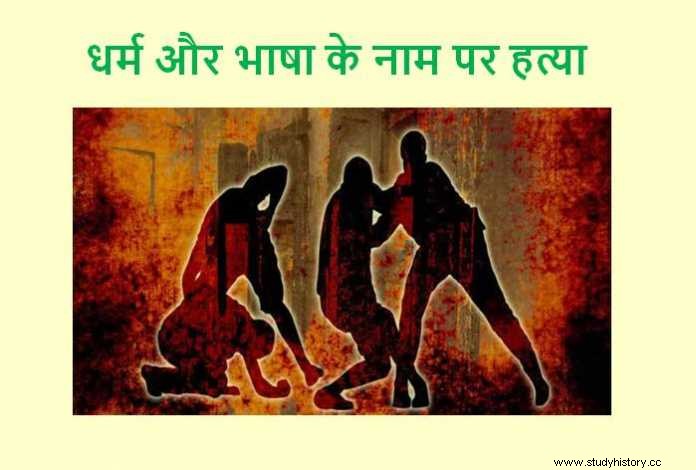
In 1947, when there was a scuffle in the area from the North-West Frontier Province to the Punjab and Sindh, the eastern border of India, that is, Bengal, was relatively calm at that time. Many historians attribute this peace to Gandhiji, but it cannot be denied that Bengal was settled by playing Holi of blood in direct action and subsequent bloodshed in the second half of AD 1946, hence the Hindus and Muslims of Bengal in 1947. at the time of the partition of the U.S. and those who had to move from West Bengal to East-Pakistan or from East-Pakistan to West Bengal, usually came without bloodshed but as soon as After a year or two, a wave of discontent and violence broke out in East Pakistan.
Where at the time of partition, there was stampede and fighting on the basis of religion in Punjab and Sindh, whereas in Bengal the basis of Markat was religious as well as linguistic. Due to this the condition of Bihari Muslims living in East-Pakistan became very pathetic. History had brought them to the point where the earth had fallen short for them to set foot on.
When Hindus were persecuted or killed in East Pakistan, they tried to flee to India, but when Urdu-speaking Bihari Muslims of East Pakistan were persecuted or killed by Bengali-speaking Muslims, they were They had to flee to a country from which they or the people of their religion had fled on the basis of religion some time back. Thus a terrible massacre broke out in East-Pakistan.
Bangla-speaking Muslims were killing Bengali-speaking Hindus on the one hand and driving away Urdu-speaking Bihari Muslims on the other. The entire East-Pakistan was drenched in blood and West Bengal was filled with refugees fleeing for their lives.
Syamaprasad Mukherjee demands land from Bangladesh
Nehru-Liaquat Pact was signed on 8 April 1950 to solve the refugee problem. It is also known as Delhi Pact. According to this agreement, the Prime Ministers of both the countries took the responsibility of protecting the minorities and preventing communal disturbances. Both also took the responsibility of creating such an environment so that minorities are not forced to leave their country.
Along with this, he also took the responsibility of making arrangements for the rehabilitation of the displaced. India's Rehabilitation Minister Dr. Shyamaprasad Mukherjee demanded that either the partition of Bengal be rejected or additional land be sought from Pakistan to settle the displaced.
Indian Prime Minister Nehru called the proposals of his Rehabilitation and Supplies Minister Dr. Shyamaprasad Mukherjee impractical. Angered by this, on 8 April 1950, Dr. Shyama Prasad Mookerjee and Kshitish Chandra Nyogi resigned from the Nehru cabinet.
Bangladesh of refugees from Bangladesh
In 1954, a large number of Hindus again migrated from East-Pakistan and started coming to India. They are still coming till today. In AD 1954, an average of 6,600 displaced-Hindus came to India per month. In AD 1955 this average increased and 13,500 displaced started coming to India every month.
The following year their average increased to above 20,003 per month. In January 1956 19,206 Hindus and in February 1956 43,534 Hindus came to India from East Pakistan. By the end of 1956 AD, a total of 3.2 lakh Hindus came to India.
On this the Indian Prime Minister Jawaharlal Nehru made a statement- 'This problem Kashmir problem is also more serious and complex.
In April 1956, the Indian government made the transit rules stricter for displaced people who wanted to come to India from East Pakistan. Due to this the process of arrival of displaced people to India slowed down somewhat but it continued continuously. Rehabilitation Minister of the Government of India, MC Khanna, while explaining the reasons for the frequent coming of the displaced to India, said- 'These people are forced to leave their homes and they face insecurity and discrimination in daily life. This is why these people come to India. In the year 1957 10,920 and in 1958 4,898 Hindus came to India.' In 1958, after the military rule was imposed on Pakistan by Ayub Khan, East-Bengal began to live in the shadow of the bayonets of soldiers from West Pakistan.
